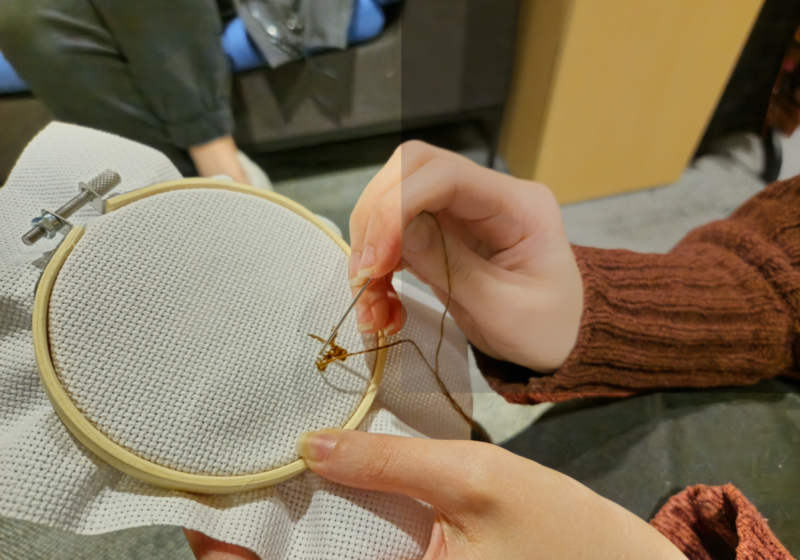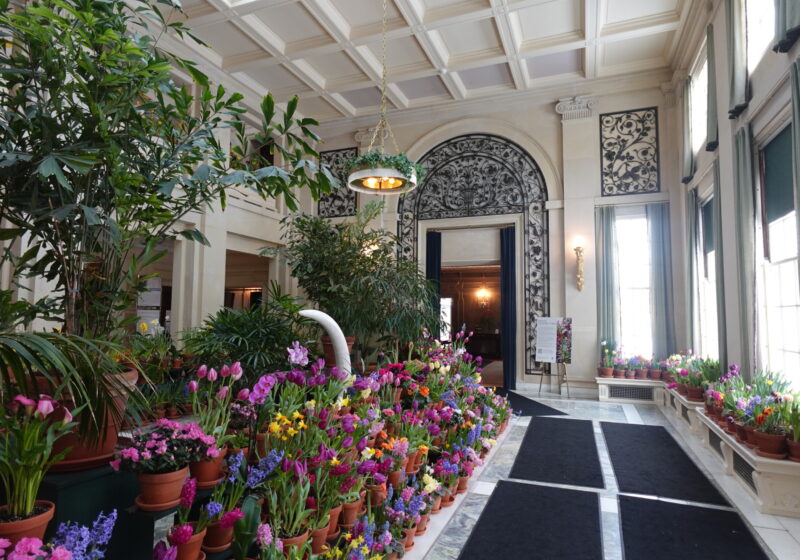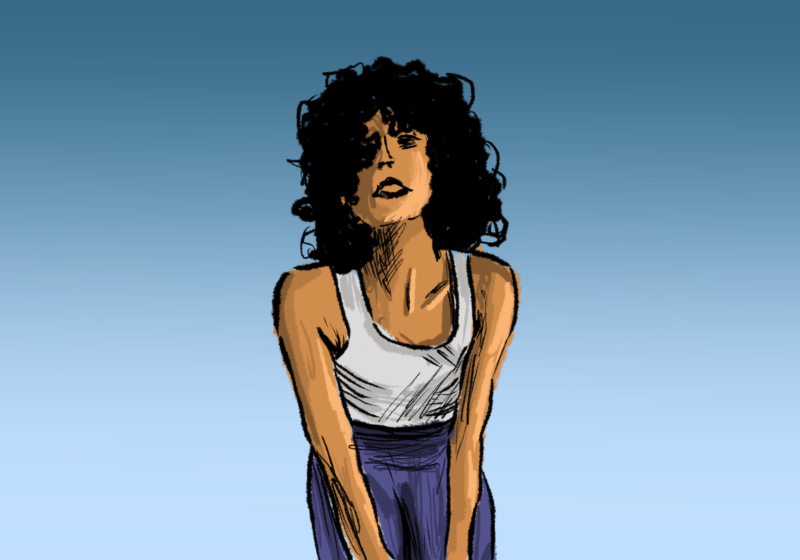The Student Association for the Development of Arab Cultural Awareness (SADACA) hosted a Tatreez workshop in the Paul J. Burgett Intercultural Center (BIC) Feb 21. Tatreez is a Palestinian style of cross-stitch embroidery, practiced by the women of Palestine for centuries.
It is estimated that Palestinian women began practicing Tatreez around 3,000 years ago, typically embroidering onto thobes: long, loose garments that are typical attire for Palestinian women. Tatreez is a specific style of embroidery that uses cross-stitching techniques to create a colorful and symbolic art piece.
The workshop was hosted by junior and president of SADACA, Sarah Aljitawi, who learned Tatreez during her time in Jordan last summer and continued the practice after with her grandmother. Aljitawi described her grandmother pulling out stack, after stack, after stack of Tatreez that she had made herself. To accompany her story, Aljitawi showed the workshop some examples of the matriarch’s masterpieces.
Aljitawi explained that Tatreez is also known as Fallahi Tatreez, of which “Fallah” means farmer or village worker. The wives of farmers and village folk would depict the world around them in their Tatreez: flowers, crops, olives, and animals are all often seen stitched into thobes. Oftentimes, thobes’ designs were used to distinguish a woman’s status and occupation. For example, the wife of a farmer may have crops and livestock stitched into her thobe, while the wife of a village worker may have flowers. With such, Tatreez has become a form of storytelling, each thobe special to the woman who crafted it. Each city in Palestine also has its own Tatreez symbol, woven into the garment to distinguish a woman’s home
Tatreez requires patience and attention to detail: the small fibers used to cross stitch are easily tangled in the back, and pulling them to the correct tension can be tedious work. Thus, Palestinian women don their Tatreez with pride and save their hand-stitched thobes for special events like weddings. Appreciating the countless, intricate little stitches making up a gorgeous garment, it is easy to see why.
There is a personal aspect for Palestinians behind Tatreez as well. After the 1948 Nakba, Aljitawi said, a ban on waving the Palestinian flag led to women stitching it into their garments in an act of resistance. Around the room, several thobes were on display, a few showcasing the incorporation of Palestinian flag symbology.
After a lesson on the history behind Tatreez, Aljitawi and a few other attendees with experience in the craft, taught the beginners how to stitch their own works of art. Everyone had a choice of creating a wall hanging or bookmark to take home with them.
A selection of Tatreez works was showcased across the BIC thanks to Ebby El-Sharkawi, an artist who has curated her collection of Tatreez and presents it at exhibits. Ebby has worked to preserve Palestinian heritage after she lost her family heirlooms along with her home in a bombing in Gaza. Since then, she has “rescued” Tatreez from hidden corners of the internet, listed for sale under names like “boho hippie embroidered dress.” Parts of El-Sharkawi’s collection can be seen on her Instagram page, @tatreezishark.
One thing that was made abundantly clear by Aljitawi and El-Sharkawi is that Tatreez can be seen everywhere. To the untrained eye, it may look like standard embroidery and cross-stitching, but when you take the time to notice the intricate details, you’ll begin to notice the rich traditions held dear by its creators. Tatreez is not just on thobes, but also on shirts, home decor, and purses — some in attendance even joked about their family’s tendencies to stitch on pillowcases.
I also tried my hand at the art of Tatreez and chose to make a wall hanging. A friend of mine, Rita Fadhel (Class of 2026, pictured above) chose a pattern depicting a chicken. After about an hour of stitching, with very little progress made, I had a newfound respect for the time and effort required to complete the complex designs on the thobes surrounding me. However, the backsides of both Rita and I’s Tatreez were free from knots and tangles, which according to Aljitawa, means a young woman is ready for marriage. She fondly explained the belief that if the backside of a woman’s Tatreez is messy, the threads have felt her worries and anxieties, and show them in her work.
Under the guidance of Aljitawi and the other teachers, everyone in the room connected, learned a new skill, listened to music, and was inspired by the flowing love and history present in each Tatreez piece. A much-needed recharge from ever-stressful campus life, SADACA’s Tatreez workshop brought people together for the sake of creation.







